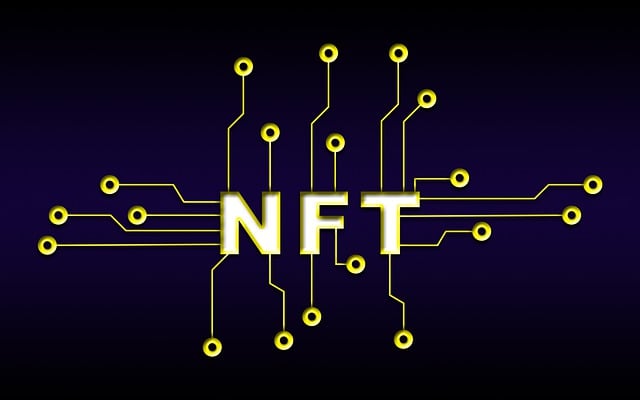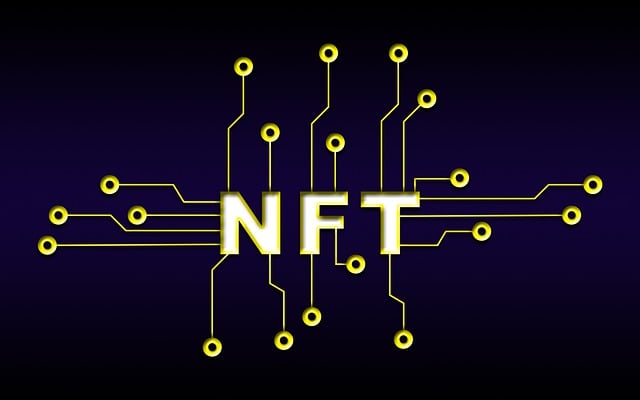Crypto Trading Signals Telegram Guide 2025
Author: Jameson Richman Expert
Published On: 2025-10-28
Prepared by Jameson Richman and our team of experts with over a decade of experience in cryptocurrency and digital asset analysis. Learn more about us.
Crypto trading signals telegram are one of the fastest-growing ways traders receive market alerts, entry/exit tips, and automated orders for cryptocurrencies. This guide explains what Telegram crypto trading signals are, how they work, how to evaluate and safely use them, and how to integrate signals with exchanges and bots in 2025. You’ll get practical examples, step-by-step setup instructions, risk-management strategies, and links to authoritative resources and exchanges to begin experimenting responsibly.

What are crypto trading signals on Telegram?
Crypto trading signals on Telegram are messages sent via Telegram channels, groups, or bots that provide actionable information about potential trades. A typical signal includes the trading pair, direction (long/short), entry price, stop-loss (SL), take-profit (TP) targets, and sometimes the rationale or technical analysis behind the recommendation.
Telegram’s messaging and bot infrastructure make it a natural home for signal distribution because it supports:
- Instant push notifications to many subscribers
- Bots and integrations for automation
- Channels for one-way broadcasts, groups for discussion, and private VIP areas
For background on Telegram as a platform, see the Telegram overview on Wikipedia: Telegram (software). For cryptocurrency basics, see the general overview: Cryptocurrency — Wikipedia.
Why Telegram is popular for crypto signals
Telegram offers features that suit traders and signal providers:
- Low-latency push alerts — immediate notifications for time-sensitive signals.
- Bots & APIs — bots can parse messages, post to webhooks, or trigger trading via exchange APIs.
- Channel structure — channels allow verified providers to broadcast to thousands without back-and-forth noise.
- Privacy and large-user support — Telegram supports large groups and privacy options that many traders prefer.
Because of these features, both manual signal services and automated trading solutions use Telegram to deliver market intelligence. If you plan to rely on signals, understand the delivery channel (channel vs group vs bot) and how the provider documents their performance.
Components of a high-quality crypto trading signal
A precise and useful Telegram signal usually contains:
- Trading pair: e.g., BTC/USDT
- Direction: buy/long or sell/short
- Entry: an exact price or a price range
- Stop-loss (SL): price level to limit downside
- Take-profit (TP): one or multiple profit targets with percentage or price
- Position size recommendation: suggested % of capital (optional)
- Rationale: brief explanation or reference to chart analysis
- Timeframe: intraday, swing, or long-term
Example signal text you might see in Telegram:
BTC/USDT — LONG. Entry: 64,200–64,800. SL: 62,600. TP1: 67,500 TP2: 71,000. Risk 1.5% per trade. Reason: breakout from ascending triangle on 4H. Managed manually.

How to evaluate a Telegram signal provider
Not all signal services are equal. Use this checklist before trusting a provider:
- Proven track record with verifiable history: Look for screenshots, public trading logs, or third-party tracking (e.g., shared exchange trade history). Beware of easily manipulated screenshots.
- Transparency of methodology: Providers should explain their logic (indicators, timeframes, fundamentals) rather than promise guaranteed returns.
- Risk metrics: Check average win rate, average risk-to-reward (R:R), max drawdown, and realistic performance stats.
- Trial period & refunds: Prefer services with a trial or money-back guarantee so you can verify performance.
- Community & support: Active Telegram communities and clear admin communication are positives.
- Third-party discussion and reviews: Search Reddit threads, industry news, and forums for experiences (both positive and negative).
For objective market data and structural analysis, reputable resources like price-index analysis can be useful; see this in-depth crypto price index chart analysis for strategic insights: Crypto Price Index Chart Overview — CryptoTradeSignals.
Signal types: manual, semi-automated, and fully automated
There are three main signal models:
- Manual signals: An analyst publishes signals and community members place trades themselves. Best for traders who want control.
- Semi-automated signals: Signals are sent, and plugins/webhooks assist in placing orders or pre-filling orders on a third-party UI.
- Fully automated (bots): Signals trigger trades automatically via API integrations between Telegram bots and exchanges. These require high vigilance for security and proper API key restrictions.
A comprehensive look at evolving automated trading and bots is available here: Binance AI Trading Bot — Deep Dive (CryptoTradeSignals). That article discusses automation risks and Reddit sentiment, useful when choosing a bot-enabled signal service.
Security best practices when using Telegram signals
Security is paramount. Follow these rules when linking signals to live accounts:
- Use API keys with Withdrawals disabled: When connecting a trading bot or automation, never enable withdrawals on the API key. Only allow trading.
- Limit IP & permissions: If the exchange supports IP whitelisting, enable it. Only allow necessary permissions (orders/trading, not account changes).
- Private key management: Never share private exchange credentials in Telegram or with third-party admins.
- Two-Factor Authentication (2FA): Enable 2FA on exchange accounts.
- Test on demo or small sizes first: Run signals on a paper account or with small sizes to confirm behavior.
When you’re ready to create accounts, consider well-known exchanges. Register with trusted platforms using the following links (use their site policies and security features):
For exchange-specific guidance—especially if you use Bybit’s spot market—see this detailed Bybit spot trading platform guide: Bybit Spot Trading Platform Guide — CryptoTradeSignals.

How to set up auto-trading with Telegram signals (step-by-step)
Below is a safe workflow for automating execution while minimizing risk:
- Create exchange accounts: Open accounts on exchanges you trust and complete KYC if required. Use secure email and enable 2FA.
- Practice on demo or small capital: Use testnet/demo accounts where available or start with minimal capital.
- Generate API keys: Create API keys on your exchange with only trading permissions (disable withdrawals). If the exchange supports IP whitelisting, enable it and restrict to your server or bot IP address.
- Connect to an automation tool or bot: Choose reputable services such as widely-used bots (3Commas, Zignaly, or exchange-native bots) and link the API key.
- Configure order behavior: Decide if you want market or limit orders, confirm order sizes, and set slippage tolerances.
- Set safety limits: Implement daily loss caps and maximum concurrent positions to limit catastrophic losses.
- Run live but monitor: Even with automation, actively monitor for system failures, false signals, or sudden market events.
Important: never give a Telegram bot or channel the ability to withdraw funds from your account.
Position sizing and risk management (actionable formulas)
Good risk controls separate good traders from bad ones. Here are practical approaches:
Fixed % risk per trade
Decide on a fixed percentage of capital you are willing to risk per trade (common: 0.5%–2%).
Position size formula (for long positions):
Position size (in USD) = Account Size × Risk% ÷ (Entry Price − Stop-Loss Price) × Entry Price
Example:
- Account balance = $10,000
- Risk per trade = 1% = $100
- Entry = $64,200, Stop-Loss = $62,600 → Distance = $1,600
- Position size = $100 ÷ ($1,600 / $64,200) = $100 ÷ 0.0249 ≈ $4,016 worth of BTC
Risk-to-Reward (R:R)
Choose signals with R:R that aligns with your win rate. Example: with a 40% win rate, you might target >= 2:1 R:R to be profitable over time.
Kelly Criterion (simplified)
Kelly fraction = Win rate − [(1 − Win rate) / (R:R)]. Use a fraction (e.g., half-Kelly) for practical sizing to avoid large swings.
Backtesting and performance analytics
Before relying on a signal provider, ask for backtests and independent verification. Useful metrics include:
- Net profit and CAGR
- Win rate and average R:R
- Max drawdown and recovery time
- Sharpe ratio and Sortino ratio
- Trade frequency and slippage assumptions
Backtesting should use realistic assumptions about execution (spread, slippage, order fills). If you want to drill into price structure and strategies, a detailed price index chart analysis is available here: Crypto Price Index Chart Overview — CryptoTradeSignals.

Common scams, red flags, and how to avoid them
Telegram has both legitimate services and scams. Watch for:
- Guaranteed returns: Any promise of guaranteed returns is a red flag.
- Fake proof: Screenshots are easy to fake. Look for live-linked trade history or third-party trackers.
- Pay-to-join exit scams: Some VIP groups take fees and vanish. Prefer trials or refundable payments.
- Social pressure & pump tactics: Channels that build hype around a coin and coordinate buys/sells can be pump-and-dump schemes.
- Requests for withdrawals or private keys: Never share private keys or enable withdrawal permissions on API keys.
Verify providers via independent communities (e.g., Reddit, TradingView discussions) but remember that community sentiment can be biased or manipulated. For community perceptions of automation and bots, check the deep dive discussion: Binance AI Trading Bot — CryptoTradeSignals.
Integrations and useful tools
Popular tools and integrations that work with Telegram signals:
- Trading bots & platforms: 3Commas, Zignaly, Cornix (Telegram-native), and exchange-native bot platforms.
- Charting & alerts: TradingView alerts can be forwarded to Telegram via webhooks for signal confirmation.
- Portfolio trackers: CoinGecko, CoinMarketCap, and dedicated portfolio apps to monitor positions.
- Backtesting tools: Backtrader, TradingView strategy tester, or exchange APIs for historical fills.
For educational resources on trading bots and automation principles, Binance Academy’s explanation of trading bots is helpful: What is a Trading Bot? — Binance Academy.
Case study: Using Telegram signals with a Bybit spot account
Example scenario: you follow a Telegram channel that posts a swing signal for ETH/USDT. Steps:
- Read signal: Entry 2,400–2,450, SL 2,280, TP1 2,700 TP2 3,000.
- Verify logic: Check the 4H chart for support at 2,400 and divergence indication.
- Size position using risk rules: For a $25,000 account and 1% risk ($250), calculate position size.
- Place order on Bybit with an API or manually. If using an API, ensure withdraw is off. Use the Bybit platform guide to confirm steps: Bybit Spot Trading Platform Guide — CryptoTradeSignals.
- Monitor and manage: Move SL to breakeven after partial profit or follow provider’s management updates.

Regulatory, tax, and legal considerations
Crypto taxation and legal rules vary by jurisdiction. Always consult a tax professional. Key points:
- Track realized gains and losses — many tax authorities require records of disposals and trades.
- Report income when you receive tokens as payment or staking rewards.
- Keep records of API-based trades and fees for audit purposes.
For U.S. guidance, see the IRS FAQ on virtual currencies: IRS — Frequently Asked Questions about Virtual Currencies. UK traders should consult HMRC guidance: HMRC — Tax on cryptoassets.
Choosing exchanges (practical considerations)
When selecting exchanges to execute Telegram-driven strategies, consider:
- Liquidity: Higher liquidity reduces slippage.
- Fees: Trading fees, maker/taker structure, and withdrawal costs.
- API reliability: Good uptime and solid API docs for automation.
- Security & regulatory compliance: Custody practices, insurance, and KYC policies.
If you don’t yet have exchange accounts, here are sign-up links to several widely used platforms. Always verify each platform’s requirements and security options before depositing significant capital:
Advanced metrics to watch for long-term success
Beyond basic win rate and R:R, advanced analytics provide deeper insight:
- Expectancy (E): E = (Win Rate × Avg Win) − (Loss Rate × Avg Loss). Positive expectancy is critical.
- Sharpe & Sortino Ratios: Risk-adjusted return aims to show return per unit of volatility or downside deviation.
- Recovery Factor: Net profit ÷ Max drawdown (higher is better).
- Monte Carlo simulations: Test robustness under random trade orderings to estimate potential equity curve outcomes.
Tools like Python (pandas/backtrader) and TradingView strategy tester allow you to compute these metrics before committing capital.

Practical checklist before acting on any Telegram signal
- Confirm the provider’s track record and transparency.
- Verify the signal’s time frame and rationale with your own charts.
- Calculate position size and set stop-loss/take-profit prior to entry.
- Restrict API permissions (no withdrawals) when using bots.
- Start with small capital or paper trading to validate signal performance.
- Monitor and keep records for tax reporting and performance analysis.
Further reading and trusted resources
To deepen your understanding of signals, bots, and strategy evaluation, consult these trusted resources:
- Trading signals overview: Investopedia — Trading Signal
- Trading bot fundamentals: Binance Academy — What is a Trading Bot?
- Tax guidance for crypto: IRS — Virtual Currencies FAQ
- Community discussion & sentiment: Search Reddit threads carefully; read both positive and critical posts about signal providers and bots.
Conclusion — Use signals, but trade responsibly
Telegram is a powerful delivery channel for crypto trading signals, blending speed with automation possibilities. In 2025, many traders will still rely on Telegram groups and bots for real-time trading ideas. However, signals are tools — not guarantees. The most consistent traders combine signals with rigorous risk management, proper backtesting, careful exchange selection, and sensible position-sizing rules.
Use the practical steps in this guide: verify providers, protect API keys (disable withdrawals), start small, and always keep a clear plan for each trade. For in-depth price analyses, automation discussion, and exchange-specific guidance referenced throughout this article, consult these resources:
- Crypto Price Index Chart Overview — CryptoTradeSignals
- Binance AI Trading Bot — CryptoTradeSignals
- Bybit Spot Trading Platform Guide — CryptoTradeSignals
Final note: this article is educational and not financial advice. Always perform your own research and consult a licensed financial advisor when in doubt.